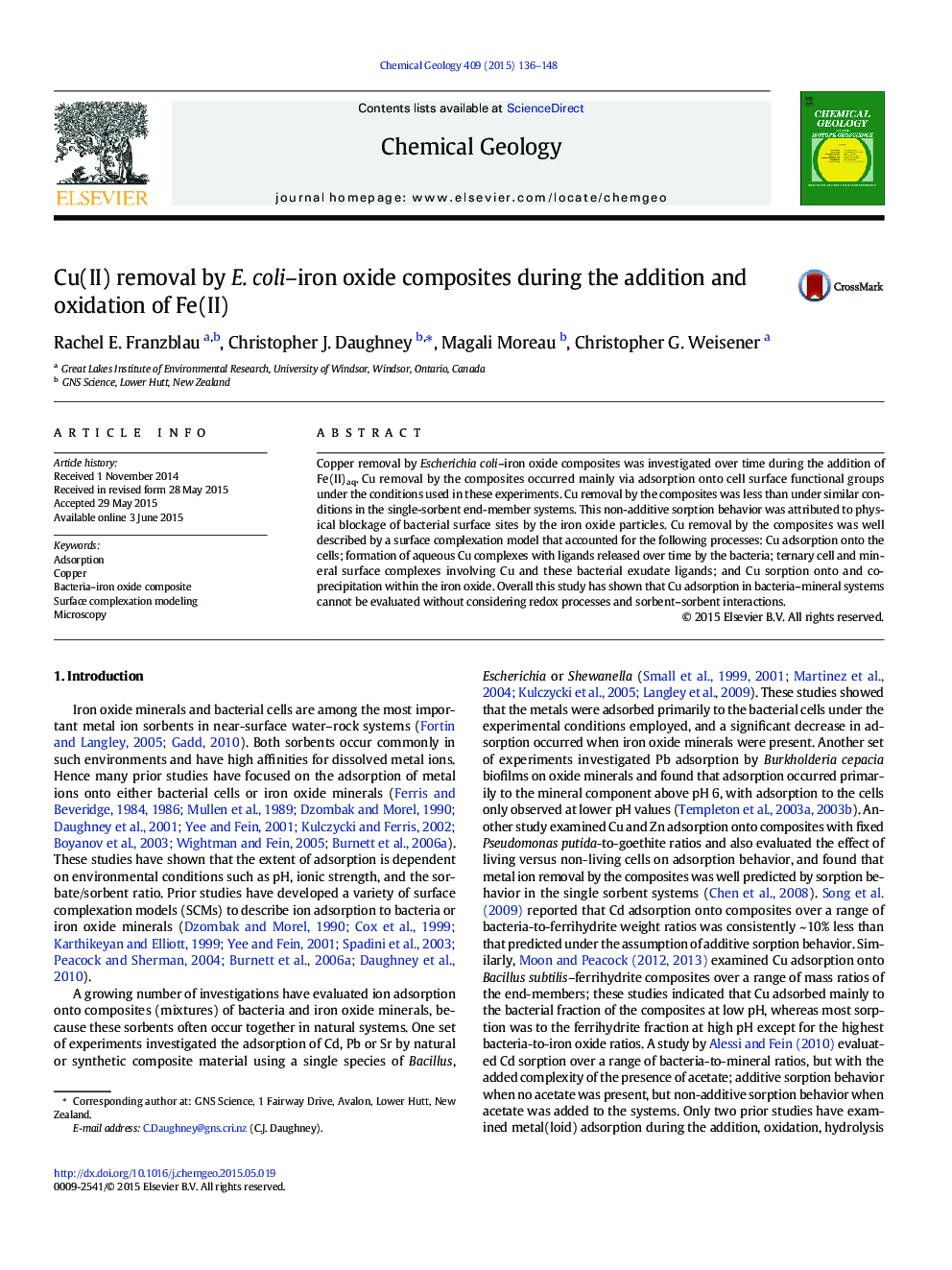| کد مقاله | کد نشریه | سال انتشار | مقاله انگلیسی | نسخه تمام متن |
|---|---|---|---|---|
| 6436394 | 1637565 | 2015 | 13 صفحه PDF | دانلود رایگان |

- Cu adsorption onto E. coli-iron oxide composites was investigated over time.
- Cu adsorption onto the composites was affected by exudates released by the cells.
- Cu-exudate-mineral and Cu-exudate-cell ternary surface complexes formed.
- Cu adsorption by the composites was non-additive relative to end-member sorbents.
Copper removal by Escherichia coli-iron oxide composites was investigated over time during the addition of Fe(II)aq. Cu removal by the composites occurred mainly via adsorption onto cell surface functional groups under the conditions used in these experiments. Cu removal by the composites was less than under similar conditions in the single-sorbent end-member systems. This non-additive sorption behavior was attributed to physical blockage of bacterial surface sites by the iron oxide particles. Cu removal by the composites was well described by a surface complexation model that accounted for the following processes: Cu adsorption onto the cells; formation of aqueous Cu complexes with ligands released over time by the bacteria; ternary cell and mineral surface complexes involving Cu and these bacterial exudate ligands; and Cu sorption onto and co-precipitation within the iron oxide. Overall this study has shown that Cu adsorption in bacteria-mineral systems cannot be evaluated without considering redox processes and sorbent-sorbent interactions.
Journal: Chemical Geology - Volume 409, 20 August 2015, Pages 136-148